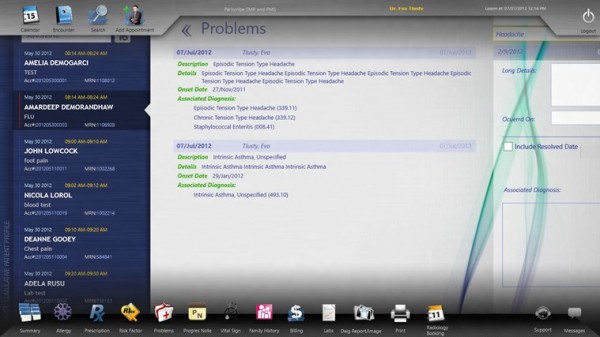EMR & HIPAA: “Yesterday at the Digital Health Conference I had the chance to catch up with George Cuthbert from Medent. He’d emailed me a few months back about the potential benefit of Windows 8 in the EHR world and the deep integration of Win 8 that they’d been working on to leverage the unique abilities of Windows 8 for their EHR users.
I admit that since I’ve become more of a health IT blogger and less of a techguy, I haven’t kept close track of all that was happening with Windows 8. I knew that it was designed to incorporate touch as a major focal point of the new Operating System and I knew that it was Microsoft’s attempt to integrate the best of touch together with the advantages of data input using a keyboard and mouse.
Based on the short demo that George did for me of Win 8 and the Medent EHR, it has some real promise. In fact, as the title suggests, I think that if an EHR vendor does it right this could solve the issues that so many EHR vendors have of trying to create an iPad EHR application.â€
I’ve always thought that the Windows OS would be ideally suited over iOS and Android for EMR/EHR use because it is the native platform used by a majority of healthcare systems in the United States. Why continually reinvent the wheel when all you do is delay innovation? That’s what’s been going on in healthcare for the last several years when it comes to using tablet technology. Everyone has fallen in love with products that offers less functionality today than my tablet PC did nearly a decade ago. It’s odd when things turn out like that. People tend to get easily distracted by shiny objects. It happens.
The EHR software described at the EMR & HIPAA site can be found in the Microsoft Store. It’s called EMR Surface. More information can be found at the Pariscribe website. It looks interesting, but one can never tell whether or not something is usable by simply looking at it. I’d be interested to hear whether or not anyone has used it and what their opinion is of the system.

Leave a Reply